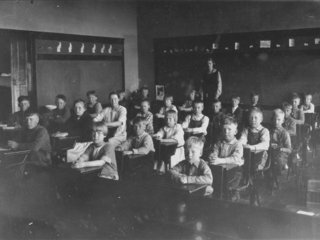DUOS expands AI capabilities to help seniors apply for assistance programs
It will complete and submit forms, and integrate with state benefit systems
Read more...
Technology in the classroom has led to some amazing advancements in everything from personalization and comprehension to classroom management and more. But there have been some bumps in the road, particularly where home access to technology is concerned. If teachers are assigning homework that requires Internet access (like watching digital lectures, or taking an online quiz), then low-income students are already at a disadvantage.
The Pew Internet & American Life Project released a comprehensive report Thursday on technology in the classroom, and in the report, researchers for the first time measured the difference in technology use in high-income versus low-income schools.
Teachers of the lowest income students were more likely to say that incorporating digital technology into their daily routine is a struggle across the board. Some 56% of teachers of students living near or below the poverty line said that they struggle with their students’ lack of access to digital technologies, compared to 21% of those teaching the highest income students.
When it comes to access, teachers of the lowest income students were more likely to report limited access to digital tools both at school and at home. Only 3% said that all or most of their students have access to digital tools at home, while 45% said they have sufficient access at school. By comparison, 52% of teachers of upper-middle and higher income students said that most or all of their students have sufficient access to technology at home, while 67% said they have sufficient access in school.
Here’s a sobering number: fully 84% of teachers surveyed agreed to some extent (strongly or somewhat) with the statement that “Today’s digital technologies are leading to greater disparities between affluent and disadvantaged schools and school districts.”
A full 39% of teachers of low-income students say that their school is “behind the curve” when it comes to incorporating digital technologies into the classroom, compared to just 15% of teachers of high-income students.
Additionally, teachers of low-income students were more than twice as likely as those of high-income students (56% vs. 21%) to say that their students’ lack of access to digital technologies is a “major challenge” to incorporating more digital tools into their teaching.
This isn’t surprising, as teachers are more likely than the general adult population to use digital technology. They’re more likely to own laptops and gadgets, including e-readers and tablets, and they’re incorporating technology into their classrooms at higher rates. Some 97% are using projectors or laptops connected to another digital device, 73% are using cell phones or smartphones in the classroom, and 67% are using digital cameras in the classroom.
But students’ access to these devices and technologies at home varies by income. In a November survey of the general population, Pew researchers found that only 59% of households earning less than $30,000 a year have an Internet connection, compared to 96% of those earning more than $75,000 a year. And only 30% of those living in households earning $30,000 or less own a smartphone, compared to 70% of those in $75K and up households.
Pew Internet Project Director Lee Rainie notes that those figures apply to all adults and are not limited to families with middle- or high school aged children. Those households with teenagers would likely have higher rates of Internet and smartphone adoption, but a disparity among incomes would still be evident, he said.
“Digital technologies have become essential instructional tools for the vast majority of teachers in this study,” said Kristen Purcell, Associate Director for Research at the Pew Internet Project, in a statement. “Yet, not all teachers feel that they and their students have the access they need to these tools or the resources necessary to use them effectively. Teachers whose students are from the lowest income households feel they are at a disadvantage when it comes to using the internet and other digital tools such as cell phones, tablet computers and e-readers to enhance the learning process.”
Image source: nashuatelegraph.com
It will complete and submit forms, and integrate with state benefit systems
Read more...The bill would require a report on how these industries use AI to valuate homes and underwrite loans
Read more...The artists wrote an open letter accusing OpenAI of misleading and using them
Read more...



